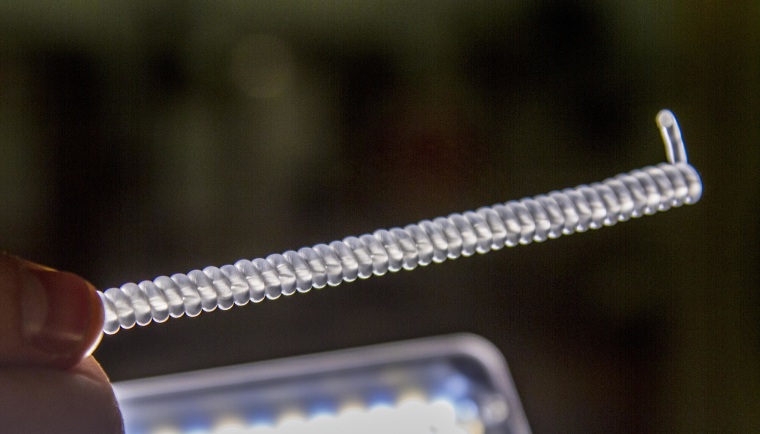Fishing lines and sewing thread look like a fairly dainty duo, but the right kind of design can give them formidable strength.
Researchers have engineered “artificial muscles” with coiled twine and thread, wound up like a rubber-band, that can lift loads 100 times heavier the same length of human muscle.
The idea is, they could one day expand and contract in the arms of robots, or in prosthetic limbs for people.
“There’s a need for muscles to add little weight and volume to a humanoid robot and still be powerful," Ray Baughman, a professor at UT Dallas told NBC News, but existing motors for exoskeletons and robots like Boston Dynamics' Atlas are heavy and large. But not only are these threads light and strong, they're also cheap, Baughman and his co-authors explain in a paper describing the threads published in the Thursday issue of Science.
The threads could also be woven into smart textiles that can breathe, expanding slightly during summers and contracting to keep out the chill in the winter.
Baughman is no stranger to super-strong fibers. Last year, his lab showed off a catapult made of carbon nanotubes dipped in paraffin wax that could lift 200 times heavier loads than the same length of human muscle.
